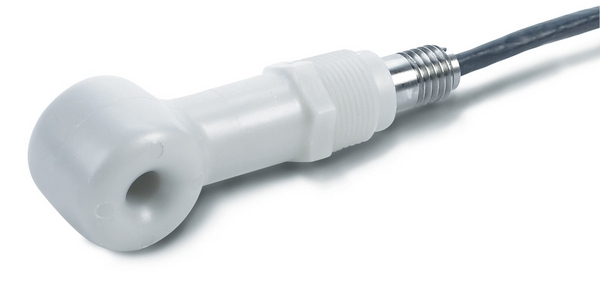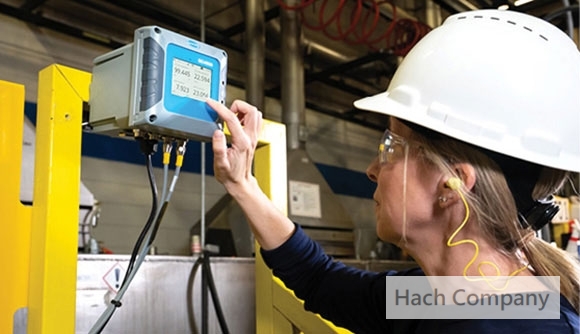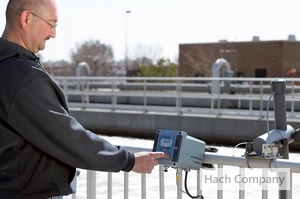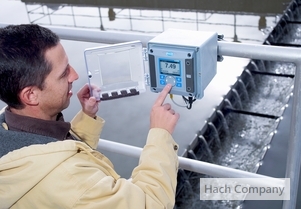電感式水中導電度感測器 Convertible Mounting Style Inductive, Electrodeless Conductivity Sensor with PFA Body Material
產品編號:3728E2T
PFA, Convertible Mounting Style, 6m (20 ft) Analog Cable, Electrodeless Conductivity Sensor
堅固、無污染設計的3700系列電感式 Inductive Conductivity Sensor 適用於線上監測金屬表面處理,化工及精煉,食品飲料紙漿造紙,紡織品製造,淨水處理,廢污水處理等多樣水質導電度的變化
極化、油污和污染等問題都不影響無電極感測器之效能。
Range 量測範圍 : From 200 µS/cm - 2000000 mS/cm microSiemens/cm up to: microSiemens/cm
Accuracy 準確度 : 0.01 % of reading, all ranges
Flow 流速 : Rate 3 m (10 ft.) per second, maximum
Mounting 安裝方式 : Convertible
Operating Temperature Range 操作溫度 : -10 - 200 °C (Sensor - limited by body material)
Temperature Sensor 溫度感測器 : Temperature Compensator Pt 1000 RTD
Sensor Cable 感測器電纜 : Polypropylene and PVDF Sensors:
5 conductor (plus two isolated shields) cable with XLPE (cross-linked polyethylene) jacket; rated to 150 °C (302ºF); 6 m (20 ft.) long
*使用Hach SC系列 controllers 數位控制主機進行全功能監控 – 連接後即可使用
關鍵字 : 水中導電度分析儀, 導電度 線上監測, 連續監測 水中 導電度, 線上 導電度計, online conductivity analyzer,
堅固、無污染設計的3700系列電感式 Inductive Conductivity Sensor 適用於線上監測金屬表面處理,化工及精煉,食品飲料紙漿造紙,紡織品製造,淨水處理,廢污水處理等多樣水質導電度的變化
極化、油污和污染等問題都不影響無電極感測器之效能。
Range 量測範圍 : From 200 µS/cm - 2000000 mS/cm microSiemens/cm up to: microSiemens/cm
Accuracy 準確度 : 0.01 % of reading, all ranges
Flow 流速 : Rate 3 m (10 ft.) per second, maximum
Mounting 安裝方式 : Convertible
Operating Temperature Range 操作溫度 : -10 - 200 °C (Sensor - limited by body material)
Temperature Sensor 溫度感測器 : Temperature Compensator Pt 1000 RTD
Sensor Cable 感測器電纜 : Polypropylene and PVDF Sensors:
5 conductor (plus two isolated shields) cable with XLPE (cross-linked polyethylene) jacket; rated to 150 °C (302ºF); 6 m (20 ft.) long
*使用Hach SC系列 controllers 數位控制主機進行全功能監控 – 連接後即可使用
關鍵字 : 水中導電度分析儀, 導電度 線上監測, 連續監測 水中 導電度, 線上 導電度計, online conductivity analyzer,
Wide Measuring Range 量測範圍寬廣
Hach’s Inductive Conductivity Sensors measure 200 up to 2,000,000 microSiemens/cm. A built-in Pt 1000 RTD compensates the measured conductivity for changes in process temperature.
Low Maintenance Design 電感式導電度感測器技術 - 減低日常維護工作量
The inductive sensor design eliminates polarization and electrode coating problems that commonly affect conventional contacting electrode-type conductivity sensors. 電感式感測器設計免除傳統接觸式電極型導電度感測器的極化和電極塗層問題
The inductive sensor design eliminates polarization and electrode coating problems that commonly affect conventional contacting electrode-type conductivity sensors. 電感式感測器設計免除傳統接觸式電極型導電度感測器的極化和電極塗層問題
Versatile Mounting Styles 靈活安裝方式
Sensors can be installed using a choice of four mounting styles—immersion, insertion, union, and sanitary.
Sensors can be installed using a choice of four mounting styles—immersion, insertion, union, and sanitary.
Principal of Operation
Inductive conductivity sensors induce a low current in a closed loop of solution, then measure the magnitude of this current to determine the solution’s conductivity. The conductivity analyzer drives Toroid A, inducing an alternating current in the solution. This current signal flows in a closed loop through the sensor bore and surrounding solution. Toroid B senses the magnitude of the induced current which is proportional to the conductance of the solution. The analyzer processes this signal and displays the corresponding reading.
Inductive conductivity sensors induce a low current in a closed loop of solution, then measure the magnitude of this current to determine the solution’s conductivity. The conductivity analyzer drives Toroid A, inducing an alternating current in the solution. This current signal flows in a closed loop through the sensor bore and surrounding solution. Toroid B senses the magnitude of the induced current which is proportional to the conductance of the solution. The analyzer processes this signal and displays the corresponding reading.
Withstands Harsh Environments 耐受嚴苛環境
The inductive sensor is available in sanitary (CIP) flange style and convertible styles in PFA®, polypropylene, PEEK®, and PVDF material. Select sensors can withstand high pressures and temperatures.
The inductive sensor is available in sanitary (CIP) flange style and convertible styles in PFA®, polypropylene, PEEK®, and PVDF material. Select sensors can withstand high pressures and temperatures.




